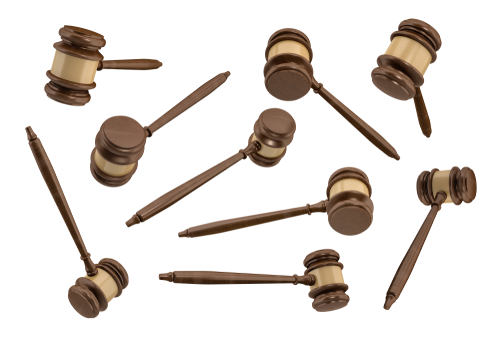USPTO Proposes Controversial New Rule on Terminal Disclaimer Practice
“Double patenting has always been suspect since there is no statutory authority for the doctrine in the first place. Now, the USPTO proposes to extend a doctrine that already lacks any basis in the law to specifically, intentionally, and unambiguously make it easier and cheaper to challenge patents tied together by terminal disclaimers.” – Gene Quinn
The U.S. Patent and Trademark Office (USPTO) will officially publish a Notice of Proposed Rulemaking (NPRM) tomorrow that would change terminal disclaimer practice related to “non-statutory double patenting.”
The judicially-created doctrine of “obviousness-type double patenting”(ODP) has become codified by the USPTO such that the Office will reject claims to more than one patent that vary in only minor ways from one another unless there is a promise by the patentee “not to extend the patent exclusivity term or allow multiple parties to harass an alleged infringer.” This is done via a “terminal disclaimer.”
According to today’s NPRM: “Even with the protections currently provided by a terminal disclaimer, multiple patents tied by terminal disclaimers that are directed to obvious variants of an invention could deter competition due to the prohibitive cost of challenging each patent separately in litigation or administrative proceedings.”
For this reason, the USPTO proposes to require that a terminal disclaimer must include an “additional agreement that the patent with the terminal disclaimer will not be enforced if any claim of the second patent is invalidated by prior art.”
This would ensure that when resolving a dispute where there are multiple patents tied by terminal disclaimers, competitors could focus on the validity of the claims of a single patent, said the NPRM.
According to the Office, the intention of the NPRM is to “promote competition by lowering the cost of challenging groups of patents tied by terminal disclaimers, resulting in reduced barriers to market entry and lower costs for consumers.”
Julie Burke of IPQualityPro LLC posted a link to the NPRM on her LinkedIn page and commenters there were critical. Alan Burnett of Compass IP Law called the proposal “an incredible overreach by the Director and the USPTO.” He continued:
“This means you could knock out an entire family (or at least multiple members) with a single IPR with technically incompetent APJs. It is very common to use [terminal disclaimers] in continuations. This is WRONG, WRONG, WRONG!”
Burke also told IPWatchdog via email that this is “a pincer move” from the USPTO, which has now attacked inventors “on both sides – first with significant proposed fee increases that would lure applicants into filing terminal disclaimers early in prosecution. Second, the May 10, 2024 proposed rule changes, if adopted, would then penalize applicants whose patent portfolios are tied together by terminal disclaimers. Coupled with steep proposed fee hikes for additional claims, continuations, and requests for continued examination, the writing is on the walls. America’s Innovation Agency is again trying to impose the Claims and Continuations Package on the IP community.”
IPWatchdog Founder and CEO Gene Quinn called the NPRM “outrageously stupid”. He explained:
“What that means is the USPTO will not treat claims as independently patentable. If one claim from one patent becomes invalidated then you lose every other claim? What happened to validity being judged claim by claim, which is actually what the law requires.
Double patenting has always been suspect since there is no statutory authority for the doctrine in the first place. Now the USPTO proposes to extend a doctrine that already lacks any basis in the law to specifically, intentionally, and unambiguously make it easier and cheaper to challenge patents tied together by terminal disclaimers.
The only virtue of this ridiculous proposal is that it deviates so much from patent law norms that it will create such outrage that the entire extra-statutory doctrine of double patenting will be challenged, and could fall.”
Comments will be due 60 days from publication tomorrow and can be submitted by entering docket number PTO-P-2024-0003 via the Federal eRulemaking Portal at www.regulations.gov.
Image Source: Deposit PHotos
Author: artursz
Image ID: 208836060
Eileen McDermott
Eileen McDermott is the Editor-in-Chief of IPWatchdog.com. Eileen is a veteran IP and legal journalist, and no stranger to the intellectual property world, having held editorial and managerial positions at […see more]






